|
Table 7. Social Benefit by category
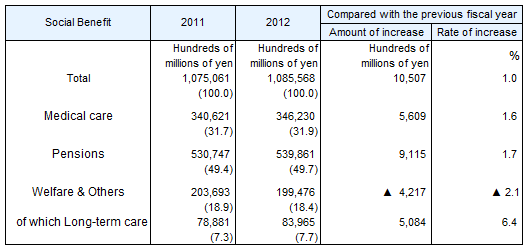
|
Notes:
|
1.
|
Figures in brackets represent the ratio to the total spending.
|
|
|
2.
|
|
Table 8. Social Benefit by category as a percentage of GDP (NI)
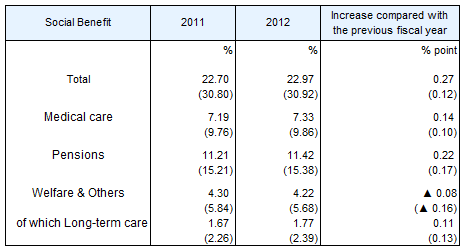
|
Note:
|
|
Figures in brackets represent the ratio to NI.
|
|
Source:
|
|
GDP and NI are based on the "Annual Report on the National Accounts Statistics 2014" (Cabinet Office, Government of Japan).
|
Figure 4. Social Benefit by category, FY 1970-2012
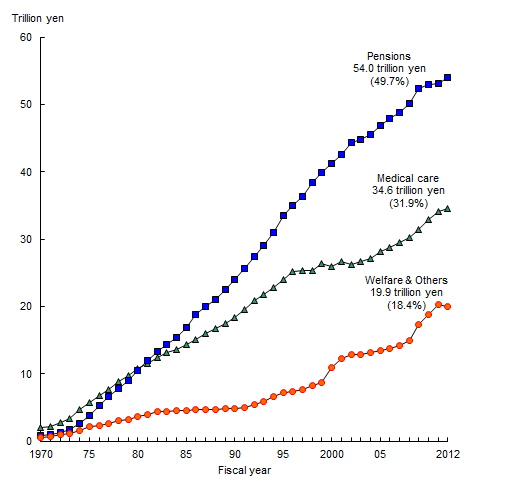
|
(2)
|
Social Benefit by functional category
Among the nine functional categories of Social Benefit in FY 2012, Old age was the largest component representing 49.0% of the total amount, and Sickness and health was the second largest represnting 30.4% of the total. These two functional categories account for 79.4% of the total. The expenditure in these two categories was followed by Survivors for 6.2%, Family benefits for 5.1%, Invalidity benefits for 3.4%, Social assistance and others for 2.9%, Unemployment for 1.5%, Employment injury for 0.9%, and Housing for 0.5%.
|
Table 9. Social Benefit by functional category
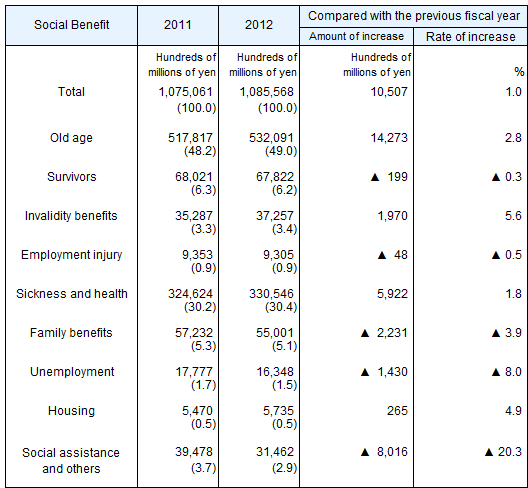
|
Notes:
|
1.
|
Figures in brackets represent the ratio to the total spending.
|
|
|
2.
|
Refer to Appendix 3 for more details about functional classifications. |
Table 10. Social Benefit by functional category as a percentage of GDP (NI)
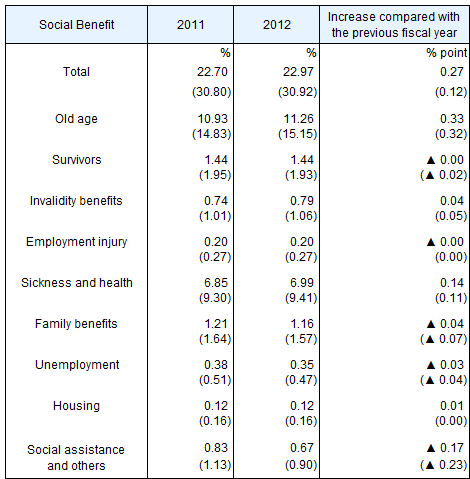
|
Note:
|
|
Figures in brackets represent the ratio to NI.
|
|
Source:
|
|
GDP and NI are based on "Annual Report on the National Accounts Statistics 2014" (Cabinet Office, Government of Japan). Hereafer the same.
|
Figure 5. Social Benefit by functional category, FY 2008-2012
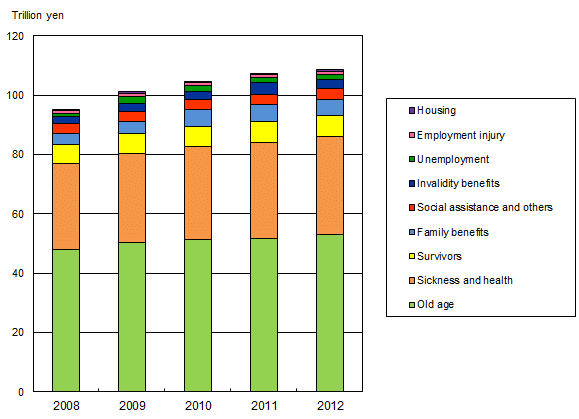
|
(3)
|
Social Security Revenue
Social Security Revenue in the fiscal year 2012 amounted to 127,055.5 billion yen, which was an 9.9% increase from the previous fiscal year. Among different sources of Social Security Revenue, Social Insurance accounts for 48.3%, Tax for 33.5%, and Other Receipts for 18.2% of the total.
|
Table 11. Social Security Revenue by source
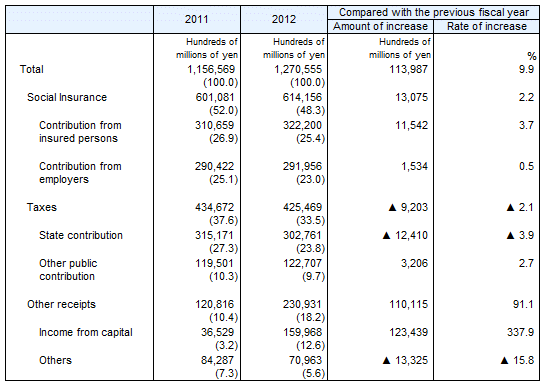
| Notes: |
1. |
Figures in brackets represent the ratio to the total revenue. |
|
2. |
Tax is the sum of state contribution and other public contribution. Other public contribution denotes to local governments’ contribution. However, social security programs which is run by local government independently are not included in the Financial Statistics of Social Security, except public nursery schools and medical care paid by local government. |
|
3. |
Income from capital is volatile in each fiscal year as it depends on the management performance of the public pension fund and other factors. Others category includes acceptance from the reserve funds. |
Figure 6. Diagram of Social Security Revenue and Social Benefit based on the ILO Standards, FY 2012
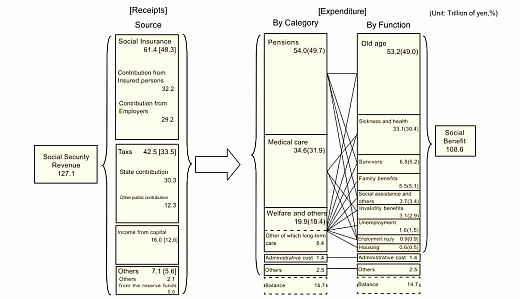
|
Notes:
|
1.
|
FY 2012 Social Security Revenue amounted to 127.1 trillion yen (excluding transfer from other systems). The figures in square brackets represent the ratio to the Total Social Security Revenue.
|
|
|
2.
|
FY 2012 Social Security expenditure amounted to 108.6 trillion yen. The figures in brackets represents the ratio to the Total Social Benefit.
|
|
|
3.
|
Others in the receipt includes receipts from the reserve funds, etc. Others in the expenditure includes maintenance expenses for the facilities, etc.
|
|
|
4.
|
Balance refers to the difference between Social Security Revenue (127.1 trillion yen) and the sum of Social Benefit, administrative costs, operating losess, and others (112.4 trillion yen), and does not include any transfer to and from other systems; in particular, balance represents transfers to the reserve fund and the balance carried forward to the following fiscal year.
|
|